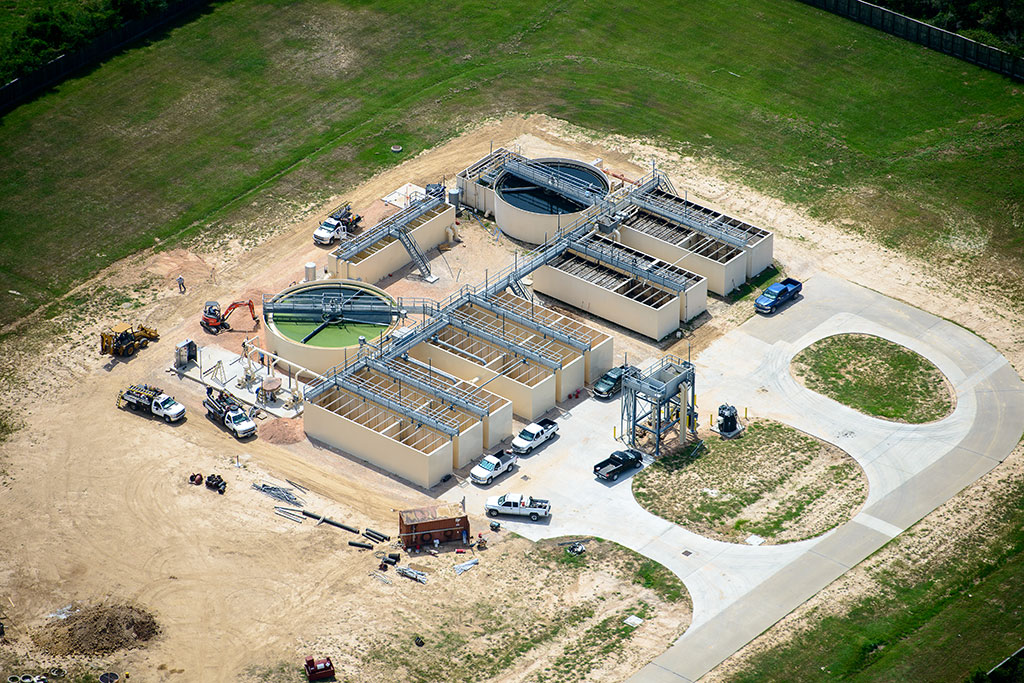
Key differences between the two approaches make each more suitable in the right circumstances
Whether raw water is being purified for consumer use or wastewater is being treated for reuse or discharge into the environment, a wide range of factors can influence which type of treatment is the most suitable for any given situation.
For many decades, treating water or wastewater at a centralized plant has been the default option. But now as infrastructure across the United States is starting to reach — or surpass — its expiration date, it’s time to consider whether it makes sense to fall back on the tried and true, or to search for a new, more sustainable approach.
Water and wastewater can be treated at a centrally located facility, or they can be treated close to the point where the water is used or the wastewater is generated, which is known as decentralized treatment. Both of these approaches have their merits, but there are distinct differences between the two.
Scale and Capacity of Treatment
Centralized treatment plants generally serve areas with concentrated populations and decentralized plants tend to serve smaller local communities, subdivisions, or facilities. Consequently, centralized systems are often designed to handle much larger volumes than decentralized systems. Centralized treatment requires extensive network of pipes and pumps for the collection or distribution of water or wastewater.
Decentralized treatment uses right-sized plants that serve remote communities or that are dispersed throughout a broader community, with each serving a smaller population near the point of use. Because the service is confined to a small area, there is no need for long networks of pipes and pumps, which can save a significant amount of money because of the high cost of laying and maintaining such networks.
Flexibility, Scalability, and Resilience

The capacity of these plants can be easily expanded to accommodate fluctuations in demand or to address population growth in diverse locations.
Centralized systems are typically designed to meet the demand of the current or projected population. However, if the area experiences rapid population growth in the future, there is less flexibility to expand to meet the growing need since modifications to the centralized infrastructure can be time-consuming and costly. Additionally, the extensive network of pipes and pumps feeding the treatment facilities can limit the plant’s ability to expand further without upgrades to the entire collection and distribution systems. Decentralized systems are often more flexible and adaptable to local conditions, and capacity of these plants can be scaled up more readily to meet changes in demand or to cater to population growth at different locations.
Decentralized systems also tend to be more resilient to localized disruptions, such as natural disasters, because failures in one unit do not affect the entire system or the broader population, but are rather confined to one unit serving a smaller community.
Energy Consumption
Centralized treatment plants use a significant amount of energy to pump treated water to the consumer, or wastewater from the point it is generated to a wastewater treatment facility. The amount of energy required depends on the distance the water or wastewater must be pumped and changes in elevation along the pipeline network. The treatment process can also be energy-intensive. Because decentralized treatment occurs close to the point of use, energy consumption is typically lower. Both centralized systems and on-site treatment systems can be designed to incorporate energy-efficient technologies that reduce energy consumption.
Environmental Footprint
Decentralized treatment systems tend to have a lower environmental impact than centralized systems because the energy required to pump water and wastewater over long distances, typical of a centralized system, contributes to greenhouse gas emissions, resulting in a larger carbon footprint. In contrast, decentralized plants employ short-distance conveyance, which has the potential to minimize anaerobic environmental conditions, resulting in a reduction of methane emissions. Decentralized systems also contribute to energy savings by minimizing the energy consumption associated with pumping.
While factors such as population density, geographic characteristics, regulatory requirements, and available resources can influence the choice between centralized and decentralized treatment, there is a growing shift toward decentralized treatment because it offers a flexible, scalable, cost-effective, and environmentally friendly alternative to centralized treatment.
Contact AUC to learn more about our decentralized water and wastewater treatment solutions and the flexible financing options we offer through our Lease Plant Program.

